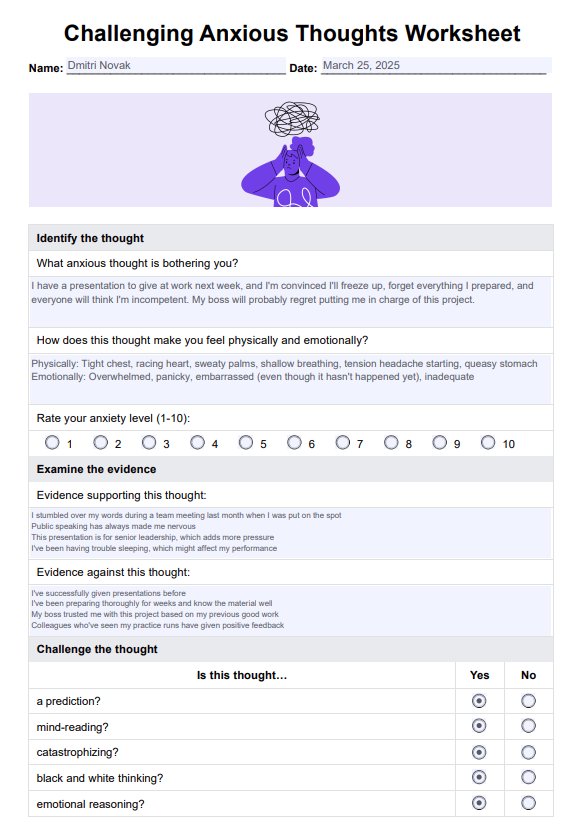The goal of the challenging anxious thoughts activity in cognitive behavioral therapy (CBT) is to help individuals identify and question negative or distorted thought patterns that contribute to anxiety. By replacing these unhelpful thoughts with more balanced and realistic ones, individuals can reduce their anxiety, gain better emotional control, and respond more effectively to stressors.

Challenging Anxious Thoughts Worksheets
Help clients dealing with anxious thinking patterns with our Challenging Anxious Thoughts Worksheet.
Challenging Anxious Thoughts Worksheets Template
Commonly asked questions
Challenging anxious thoughts involves identifying the thought, evaluating its accuracy, and reframing it. Techniques include listing evidence for and against the thought, considering alternative explanations, and testing its validity through rational analysis. This process helps individuals see their thoughts more objectively and reduces the emotional impact of cognitive distortions like catastrophizing or "fortune-telling."
To stop fixating on an anxious thought, practice techniques such as mindfulness, distraction, or thought defusion. Mindfulness helps by focusing on the present moment rather than ruminating on worries. Cognitive techniques like reframing or challenging the thought can also reduce its intensity. Engaging in physical activity or redirecting attention to another task can further break the cycle of fixation.
EHR and practice management software
Get started for free
*No credit card required
Free
$0/usd
Unlimited clients
Telehealth
1GB of storage
Client portal text
Automated billing and online payments











